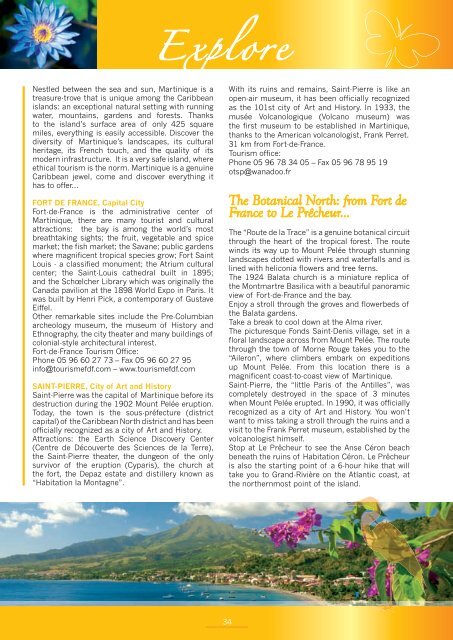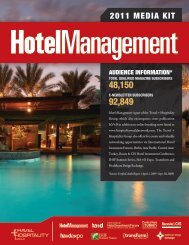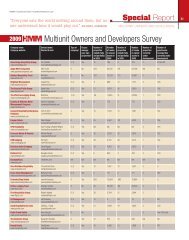how to get to martinique
how to get to martinique
how to get to martinique
Create successful ePaper yourself
Turn your PDF publications into a flip-book with our unique Google optimized e-Paper software.
Explore<br />
Nestled between the sea and sun, Martinique is a<br />
treasure-trove that is unique among the Caribbean<br />
islands: an exceptional natural setting with running<br />
water, mountains, gardens and forests. Thanks<br />
<strong>to</strong> the island’s surface area of only 425 square<br />
miles, everything is easily accessible. Discover the<br />
diversity of Martinique’s landscapes, its cultural<br />
heritage, its French <strong>to</strong>uch, and the quality of its<br />
modern infrastructure. It is a very safe island, where<br />
ethical <strong>to</strong>urism is the norm. Martinique is a genuine<br />
Caribbean jewel, come and discover everything it<br />
has <strong>to</strong> offer...<br />
FORT DE FRANCE, Capital City<br />
Fort-de-France is the administrative center of<br />
Martinique, there are many <strong>to</strong>urist and cultural<br />
attractions: the bay is among the world’s most<br />
breathtaking sights; the fruit, ve<strong>get</strong>able and spice<br />
market; the fish market; the Savane; public gardens<br />
where magnificent tropical species grow; Fort Saint<br />
Louis - a classified monument; the Atrium cultural<br />
center; the Saint-Louis cathedral built in 1895;<br />
and the Schœlcher Library which was originally the<br />
Canada pavilion at the 1898 World Expo in Paris. It<br />
was built by Henri Pick, a contemporary of Gustave<br />
Eiffel.<br />
Other remarkable sites include the Pre-Columbian<br />
archeology museum, the museum of His<strong>to</strong>ry and<br />
Ethnography, the city theater and many buildings of<br />
colonial-style architectural interest.<br />
Fort-de-France Tourism Office:<br />
Phone 05 96 60 27 73 – Fax 05 96 60 27 95<br />
info@<strong>to</strong>urismefdf.com – www.<strong>to</strong>urismefdf.com<br />
SAINT-PIERRE, City of Art and His<strong>to</strong>ry<br />
Saint-Pierre was the capital of Martinique before its<br />
destruction during the 1902 Mount Pelée eruption.<br />
Today, the <strong>to</strong>wn is the sous-préfecture (district<br />
capital) of the Caribbean North district and has been<br />
officially recognized as a city of Art and His<strong>to</strong>ry.<br />
Attractions: the Earth Science Discovery Center<br />
(Centre de Découverte des Sciences de la Terre),<br />
the Saint-Pierre theater, the dungeon of the only<br />
survivor of the eruption (Cyparis), the church at<br />
the fort, the Depaz estate and distillery known as<br />
“Habitation la Montagne”.<br />
With its ruins and remains, Saint-Pierre is like an<br />
open-air museum, it has been officially recognized<br />
as the 101st city of Art and His<strong>to</strong>ry. In 1933, the<br />
musée Volcanologique (Volcano museum) was<br />
the first museum <strong>to</strong> be established in Martinique,<br />
thanks <strong>to</strong> the American volcanologist, Frank Perret.<br />
31 km from Fort-de-France.<br />
Tourism office:<br />
Phone 05 96 78 34 05 – Fax 05 96 78 95 19<br />
otsp@wanadoo.fr<br />
The Botanical North: from Fort de<br />
France <strong>to</strong> Le Prêcheur...<br />
The “Route de la Trace” is a genuine botanical circuit<br />
through the heart of the tropical forest. The route<br />
winds its way up <strong>to</strong> Mount Pelée through stunning<br />
landscapes dotted with rivers and waterfalls and is<br />
lined with heliconia flowers and tree ferns.<br />
The 1924 Balata church is a miniature replica of<br />
the Montmartre Basilica with a beautiful panoramic<br />
view of Fort-de-France and the bay.<br />
Enjoy a stroll through the groves and flowerbeds of<br />
the Balata gardens.<br />
Take a break <strong>to</strong> cool down at the Alma river.<br />
The picturesque Fonds Saint-Denis village, set in a<br />
floral landscape across from Mount Pelée. The route<br />
through the <strong>to</strong>wn of Morne Rouge takes you <strong>to</strong> the<br />
“Aileron”, where climbers embark on expeditions<br />
up Mount Pelée. From this location there is a<br />
magnificent coast-<strong>to</strong>-coast view of Martinique.<br />
Saint-Pierre, the “little Paris of the Antilles”, was<br />
completely destroyed in the space of 3 minutes<br />
when Mount Pelée erupted. In 1990, it was officially<br />
recognized as a city of Art and His<strong>to</strong>ry. You won’t<br />
want <strong>to</strong> miss taking a stroll through the ruins and a<br />
visit <strong>to</strong> the Frank Perret museum, established by the<br />
volcanologist himself.<br />
S<strong>to</strong>p at Le Prêcheur <strong>to</strong> see the Anse Céron beach<br />
beneath the ruins of Habitation Céron. Le Prêcheur<br />
is also the starting point of a 6-hour hike that will<br />
take you <strong>to</strong> Grand-Rivière on the Atlantic coast, at<br />
the northernmost point of the island.<br />
34









